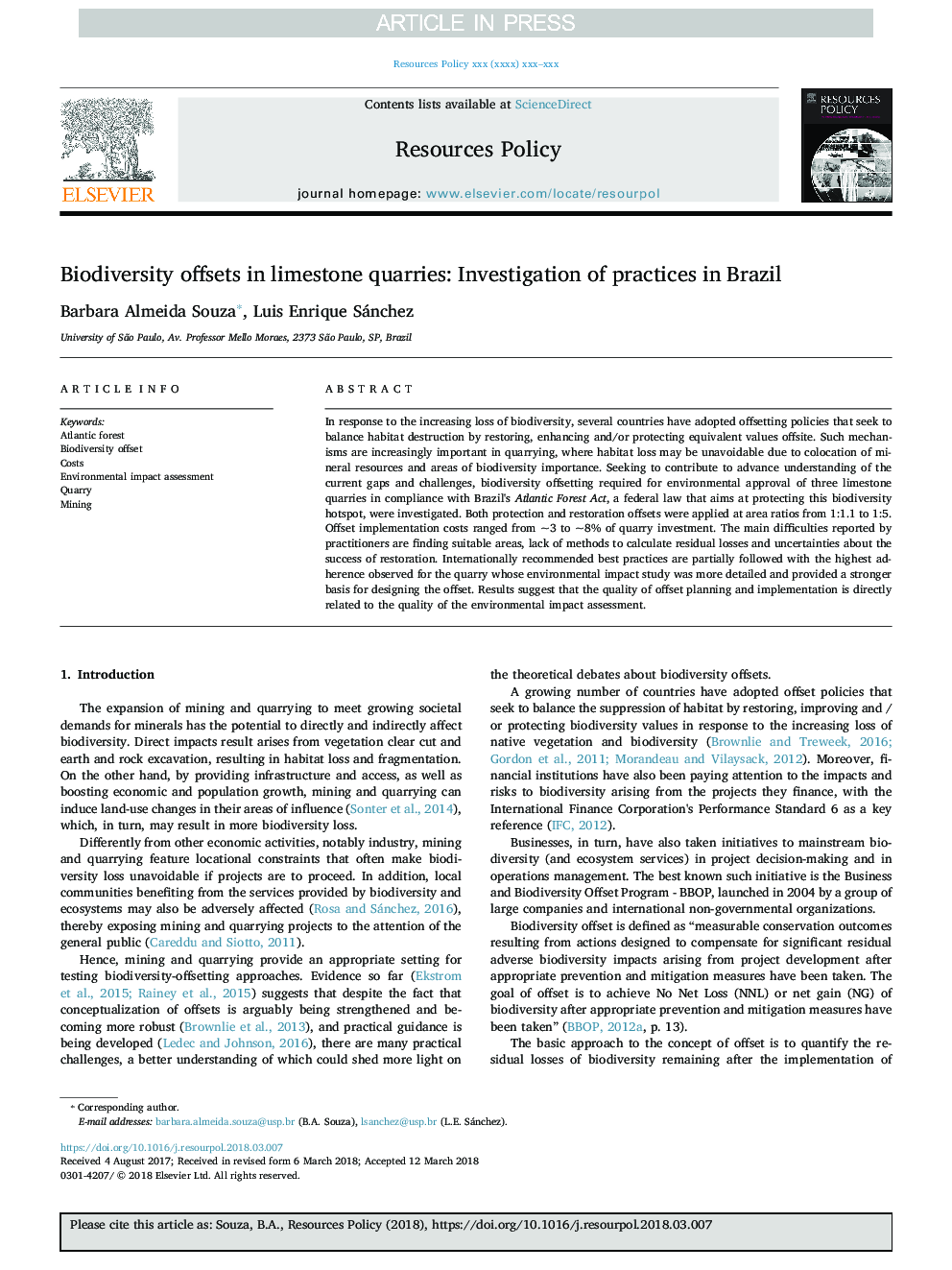| Article ID | Journal | Published Year | Pages | File Type |
|---|---|---|---|---|
| 7387541 | Resources Policy | 2018 | 11 Pages |
Abstract
In response to the increasing loss of biodiversity, several countries have adopted offsetting policies that seek to balance habitat destruction by restoring, enhancing and/or protecting equivalent values offsite. Such mechanisms are increasingly important in quarrying, where habitat loss may be unavoidable due to colocation of mineral resources and areas of biodiversity importance. Seeking to contribute to advance understanding of the current gaps and challenges, biodiversity offsetting required for environmental approval of three limestone quarries in compliance with Brazil's Atlantic Forest Act, a federal law that aims at protecting this biodiversity hotspot, were investigated. Both protection and restoration offsets were applied at area ratios from 1:1.1 to 1:5. Offset implementation costs ranged from ~3 to ~8% of quarry investment. The main difficulties reported by practitioners are finding suitable areas, lack of methods to calculate residual losses and uncertainties about the success of restoration. Internationally recommended best practices are partially followed with the highest adherence observed for the quarry whose environmental impact study was more detailed and provided a stronger basis for designing the offset. Results suggest that the quality of offset planning and implementation is directly related to the quality of the environmental impact assessment.
Related Topics
Physical Sciences and Engineering
Earth and Planetary Sciences
Economic Geology
Authors
Barbara Almeida Souza, Luis Enrique Sánchez,
